-
Doctors
-
Specialities & Treatments
Centre of Excellence
Specialties
Treatments and Procedures
Hospitals & Directions HyderabadCARE Hospitals, Banjara Hills CARE Outpatient Centre, Banjara Hills CARE Hospitals, HITEC City CARE Hospitals, Nampally Gurunanak CARE Hospitals, Musheerabad CARE Hospitals Outpatient Centre, HITEC City CARE Hospitals, Malakpet
HyderabadCARE Hospitals, Banjara Hills CARE Outpatient Centre, Banjara Hills CARE Hospitals, HITEC City CARE Hospitals, Nampally Gurunanak CARE Hospitals, Musheerabad CARE Hospitals Outpatient Centre, HITEC City CARE Hospitals, Malakpet Raipur
Raipur
 Bhubaneswar
Bhubaneswar Visakhapatnam
Visakhapatnam
 Nagpur
Nagpur
 Indore
Indore
 Chh. Sambhajinagar
Chh. SambhajinagarClinics & Medical Centers
Book an AppointmentContact Us
Online Lab Reports
Book an Appointment
Consult Super-Specialist Doctors at CARE Hospitals
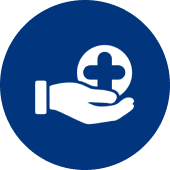
Endobronchial Ultrasound (EBUS)
Endobronchial Ultrasound (EBUS)
Endobronchial Ultrasound (EBUS) Test in Hyderabad, India
An endobronchial ultrasound (EBUS) is a procedure to diagnose various types of lung diseases such as inflammations, infections, or cancer. The procedure uses high-frequency sound waves to deliver images of tissues through bronchoscopy (a flexible scope, which is inserted through the mouth into the larger lungs' airways called bronchi).
You will not be exposed to ionizing radiation or undergo surgery during an endobronchial ultrasound. In addition to its ability to diagnose certain kinds of inflammatory lung diseases that cannot be confirmed with standard imaging tests, it is typically performed in an outpatient setting.
Why is endobronchial bronchoscopy done?
Endobronchial Ultrasound procedure allows physicians to collect tissue or fluid samples without having to perform traditional surgery on the lungs or surrounding lymph nodes. Samples are useful for:
-
Staging and diagnosing lung cancer
-
Detecting infections such as tuberculosis
-
Detecting inflammatory diseases such as sarcoidosis
-
Detecting cancers such as lymphoma
What are the Risks?
Although the EBUS procedure is very safe, there are a few risks associated with it, including bleeding from the biopsy, infection afterward, low oxygen levels during the procedure or afterward, as well as a very, very small chance of the lungs collapsing. The complications listed above are treatable, but you may be required to spend the night in the hospital instead of returning home on the day of your procedure. It is important to tell your doctor if you have ever experienced difficulty with anesthesia or sedation medications in the past.
Diagnosis
Historically, lung cancer was diagnosed using invasive procedures carried out via the thorax (chest) to obtain an accurate staging. Some of these techniques include:
-
A mediastinoscopy involves inserting a scope through an incision at the top of the sternum (breastbone).
-
A thoracoscopy is a procedure in which the lungs are accessed through small incisions between the ribs of the chest, using specialized tools and a viewfinder.
-
Thoracotomy involves the removal of a part of the rib (or ribs) to access the lungs.
Healthcare providers can benefit from endobronchial ultrasonography without incurring the risks associated with surgery.
Analyzing the Results
Based on why you are having the procedure, the samples will be sent to your doctor to be examined for evidence of infection, inflammation, or cancer. It usually takes a few days for the results to be analyzed, and at the time your physician will call you or schedule an appointment for you to go over the results.
Purpose of the Procedure
As a complementary procedure to traditional bronchoscopy, endobronchial ultrasonography can be ordered if you have been diagnosed with lung cancer (or initial tests are strongly suggestive of it).
EBUS or Endobronchial Ultrasound Bronchoscopy Procedure in Hyderabad, which uses refracted sound waves instead of a viewing scope to visualize airways, provides healthcare providers with a broader picture than bronchoscopy. Ultrasound can provide information about squamous cell carcinomas (which typically begin in the airways) and metastatic lung adenocarcinomas (which can grow from the outer edges of the lungs and invade the central part of the lung) that have invaded the central part of the lung.
EBUS is indicated for two primary reasons
- Lung cancer staging: Staging determines the severity of lung cancer so that the appropriate treatment can be provided. The technique of transbronchial needle aspiration (TBNA) allows healthcare providers to obtain tissue from within the lung or from mediastinal lymph nodes in the chest using endobronchial ultrasound. The biopsy cells can then be sent to the lab for analysis in order to determine whether the cancer is still in its early stages.
- Evaluation of abnormal lesions: EBUS with TBNA can be used to obtain a sample of the affected tissues if an abnormal lesion is discovered on a chest X-ray or computed tomography scan. A lymph node biopsy can identify whether the swelling is caused by cancer or an inflammatory lung disease like sarcoidosis. Lymph nodes can also be sampled by EBUS in people who suspect they have pulmonary lymphoma, a form of blood cancer.
What to Expect
Before the Procedure
Depending on when the procedure is scheduled, your physician may order blood tests before your procedure, and the evening before your procedure you will be asked not to eat or drink after midnight.
During The Procedure
You will receive an IV on the day of your procedure so you will be able to receive medications that will make your procedure more comfortable. Occasionally, anesthesia is used to make you completely unconscious. During EBUS bronchoscopy, the camera is inserted through your mouth once you are comfortable or asleep.
Your doctor will examine and collect samples from your lung with the help of a camera and ultrasound. Typically, these samples will be taken with an ultrasonic probe and a small needle. A mild cough and sore throat may accompany your illness, but both will disappear in a day or two.
After the Procedure
After a short observation period, an EBUS bronchoscopy generally takes place as an outpatient procedure. You will need someone to drive you home following the procedure.
The Benefits of Endobronchial Ultrasound
There are advantages to EBUS compared to other lung disease diagnostic methods, such as mediastinoscopy. They include:
-
Several complications are less likely, including infection and lung collapse.
-
EBUS enables your doctor to biopsy, diagnose, and stage lung cancer all at the same time. Consequently, separate procedures are not necessary, which have their own risks.
-
Multiple tissue samples can be collected from your lymph nodes and lungs during the same procedure. If you have lung cancer, you may have your tissue tested to see if it contains a gene mutation or special protein. A newer treatment option, such as targeted therapy, may be available to you if your tumor has a genetic makeup.
Limitations
While endobronchial ultrasound is an excellent tool, it is limited in its ability to visualize lung tissue. The mediastinum (the membrane between the two lungs) is good at providing information about the upper and front parts, but it may not be able to reveal cancer that has spread.
In addition to diagnosing lung infections, EBUS is also useful for detecting lung cancer. By accessing hard-to-reach lymph nodes and determining the strain of bacteria that is resistant to antibiotics, endobronchial ultrasound can help diagnose tuberculosis. In spite of its sensitivity, EBUS often produces false negatives in three of ten procedures in patients with tuberculosis.
Why Choose CARE Hospitals?
The CARE Hospitals provide comprehensive care, diagnostics, endobronchial ultrasound-EBUS treatment, and specialized services for lung diseases. The specialized team provides comprehensive treatment for pulmonary diseases and disorders, including sleep disorders, pulmonary hypertension, asthma, pneumonia, chronic obstructive pulmonary disease, severe respiratory failure, acute lung injury, acute and chronic respiratory failure, and various lung infections. Patients are provided treatment as in-patients, out-patients, and ICU patients.
Our Doctors
-
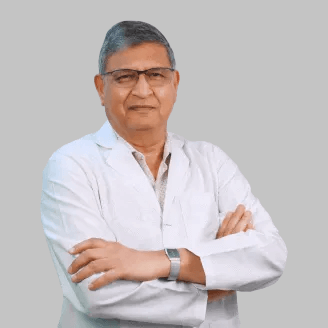
Dr. A Jayachandra
MBBS, DTCD, FCCP Special training in Med. Thoracoscopy Marseilles France
Pulmonology
View More -
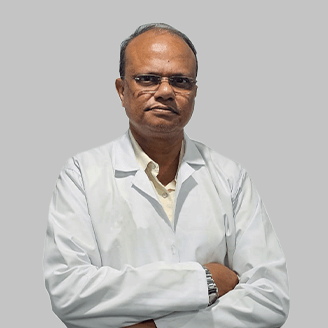
Dr. Anirban Deb
MBBS, MD (TB & Respiratory Diseases)
Pulmonology
View More -

Dr. Damodar Bindhani
MBBS, MD (Chest & Respiratory Diseases)
Critical Care Medicine, Pulmonology
View More -

Dr. Diti V Gandhasiri
MBBS, MD, DNB (Respiratory Medicine)
Pulmonology
View More -
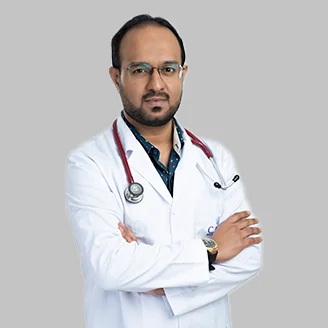
Dr. Faizan Aziz
Mbbs, MD Pulmonology, FIIP[ Fellowship In Interventional Pulmonology, Italy, Europe ]
Pulmonology
View More -

Dr. G. Anil Kumar
MBBS, DNB (Pulmonary Medicine)
Pulmonology
View More -

Dr. Girish Kumar Agrawal
DNB (Respiratory Disease), IDCCM, EDRM
Pulmonology
View More -

Dr. K Sailaja
MBBS, MD
Pulmonology
View More -

Dr. Ketan Malu
MBBS, DNB (Respiratory Medicine), EDARM (Europe), Fellowship in Respiratory Medicine (UK)
Pulmonology
View More -

Dr. MD. Abdullah Saleem
iMBBS, MD, FCCP (USA)
Pulmonology
View More -

Dr. Mohammed Mukarram Ali
MBBS, DTCD, FCCP
Pulmonology
View More -

Dr. Nitin Chitte
MBBS, DNB (Pulmonary Medicine), EDARM (Europe)
Pulmonology
View More -
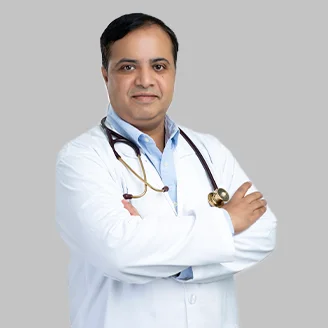
Dr. Sandeep Raj Bharma
MBBS, MD (Pulmonary Medicine), Fellowship (Pulmonary Medicine), Fellowship(sleep medicine)
Pulmonology
View More -
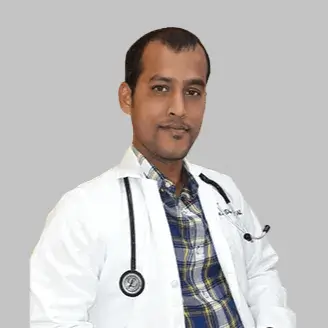
Dr. Sanjib Mallick
MBBS, MD Pulmonary Medicine
Pulmonology
View More -

Dr. Sathish C Reddy S
MBBS, MD, DM (Pulmonary Medicine)
Pulmonology
View More -

Dr. Sudheer Nadimpalli
MD (Resp. Med), MRCP (UK), FRCP (Edinburgh)
Pulmonology
View More -

Dr. Suhas P. Tiple
MBBS, TDD, DNB (Respiratory Diseases), CTCCM (ICU Fellowship), CCEBDM
Pulmonology
View More -

Dr. Sushil Jain
MBBS, DTCD, DNB
Pulmonology
View More -

Dr. Syed Abdul Aleem
MBBS, DTCD, DNB (RESP. Diseases),MRCP (UK) (RESP. MED.)
Pulmonology
View More -
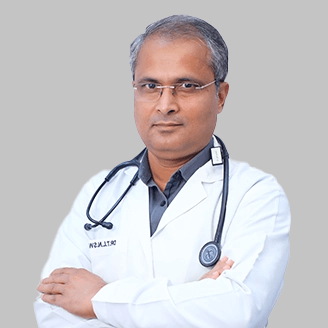
Dr. T L N Swamy
MBBS, MD (Respiratory Diseases)
Pulmonology
View More -
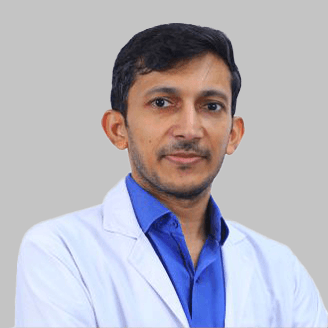
Dr. V N B Raju
MBBS, MD
Pulmonology
View More
Frequently Asked Questions
Still Have a Question?

